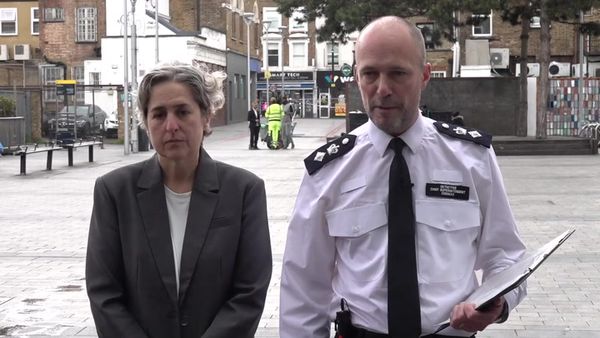
Senior New South Wales Liberals sought support from the Albanese government to generate carbon credits from ceasing logging in state forests only for their approach to be snubbed by their federal counterparts.
Documents obtained under freedom of information laws by the Nature Conservation Council of NSW reveal the then environment minister, James Griffin, and the then energy minister, Matt Kean, wrote to Tanya Plibersek and Chris Bowen seeking creation of new credits under the Emissions Reduction Fund.
An “improved native forestry methodology” would likely generate “significant carbon abatement” and create an important stream of revenue, the letter written in December said.
Those funds could be used for purposes including better management of existing national parks, the creation of new ones and development of plantations.
These would deliver “major ecological benefits for species such as koalas, greater gliders and other threatened species as well as significant economic benefits for regional Australia”, the letter said.
As Guardian Australia revealed in May, the Perrottet government was developing a policy to end native forest logging to take to the March election. The effort, though, was blocked by the Nationals before it could get to cabinet.
Chris Minns’ Labor government was surprised by the plans as incoming ministers had not been briefed by their departments about the strategy. It is understood the Liberals’ aim had been to develop multiple prongs to phase out the loss-making timber operations without costing the budget.
That work included the commissioning of Frontier Economics to examine how the cost of reducing logging in the forests of southern NSW by 20% could be covered by the resulting carbon credits. That region had been particularly hard hit by the 2019-20 black summer bushfires, limiting the harvestable timber.
Such a reduction could generate as much as 8.68m tonnes of carbon abatement over 30 years, or almost 300,000 tonnes annually, according to the resulting report, also released under freedom of information laws.
Such abatement if monetised could help pay compensation for affected communities and workers. There would also be “significant economic benefits” for the NSW south coast including an estimated 178 additional jobs through tourism and other ventures, another letter stated.
Griffin and Kean’s approach to the federal government to alter the methodology to count avoided deforestation had been “encouraged” by the federal government, one person with knowledge of the plans said.
Despite that overture, neither Plibersek nor Bowen replied to the letter, several people told Guardian Australia.
A spokesperson for Plibersek deflected questions to Bowen’s office. A spokesperson for Bowen said since the December letter had been sent, the “government received and accepted the advice of the Independent Review of Australian Carbon Credit Units that method development should be proponent-led”.
“Proponents of methods to credit improvement management of native forests are welcome to engage in the consultation,” she said.
A spokesperson for NSW’s new environment minister, Penny Sharpe, said the government would continue to work with federal counterparts on carbon farming methodologies as set out by the Chubb report.
“We believe there are significant opportunities to improve the current system,” he said.
Jacqui Mumford, the chief executive of the Nature Conservation Council, said the documents reveal “the NSW Liberals had a plan to value the critical contribution forests make to storing carbon”.
“If the proposal were to go ahead, reducing logging by 20% in south coast forests would generate at least $120m in revenue,” Mumford said, adding the former government “recognised that public opinion is in favour of protecting native forests from logging, and was exploring creative, win-win ways to protect both regional economies and our precious forests”.
The Greens’ environment spokesperson, Sue Higginson, said it was “absurd” taxpayers were forking out millions of dollars annually to support logging state forests, including in areas earmarked by the Minns government for great koala national park.
“Federal and NSW Labor need to wake up,” Higginson said, adding “we are fooling ourselves if we think the answer is to dump the carbon value in our forests into the carbon market to allow emissions-intensive industries to keep emitting”.
In another of the documents, Atticus Fleming, the then acting coordinator general of the Environment and Heritage group, hailed the carbon plan as a “groundbreaking new initiative that will deliver at no cost to government significant ecological and economic benefits for the NSW south coast region and a major contribution to the NSW net zero target”.
Some 87,000 hectares of high conservation value forest was to have been transferred to the national park estate. The Natural Resources commission listed the areas as at extreme or high risk, and where forestry should cease or have “significant constraints” imposed, Fleming wrote in an undated letter.
“The initiative is conditional on the development of a new methodology under the CFI Act related to avoided forest harvesting, and the registration of the initiative as an eligible emissions reduction project under that Act,” Fleming said.






